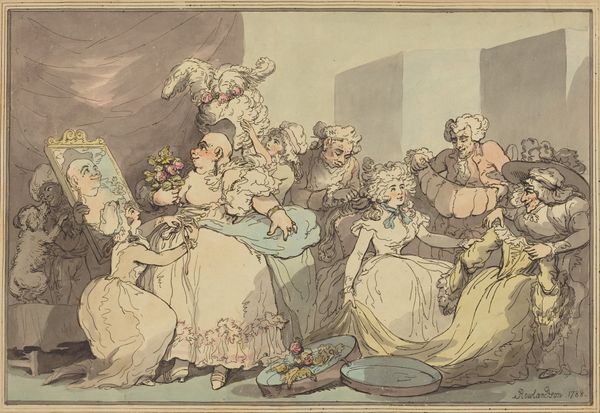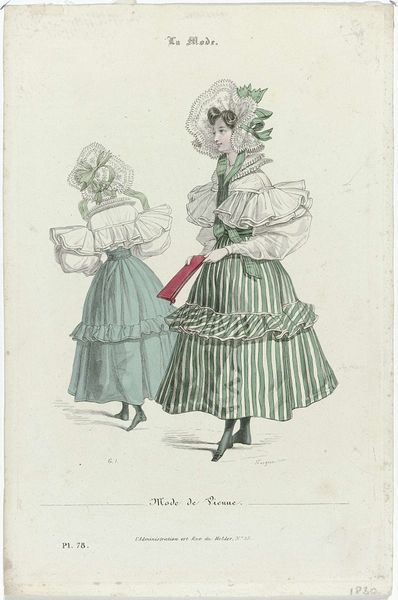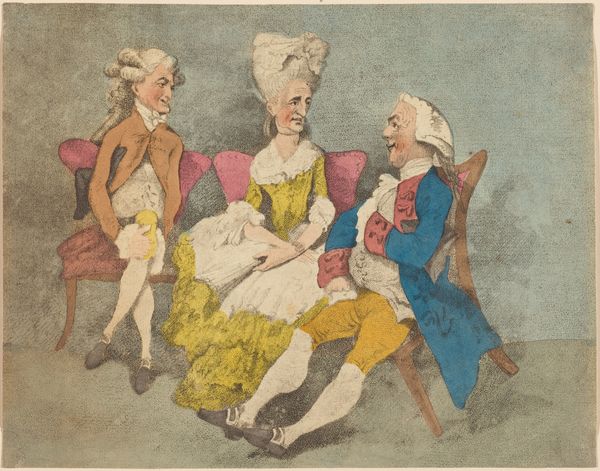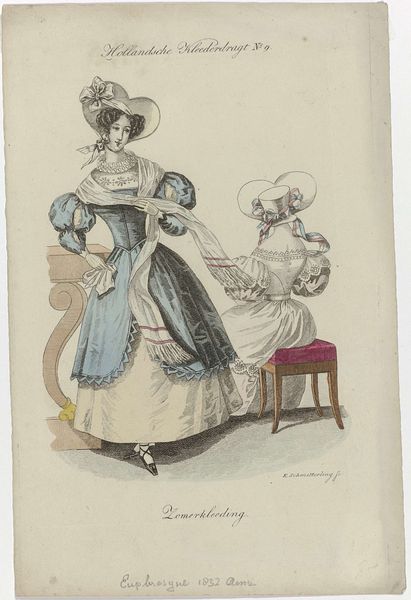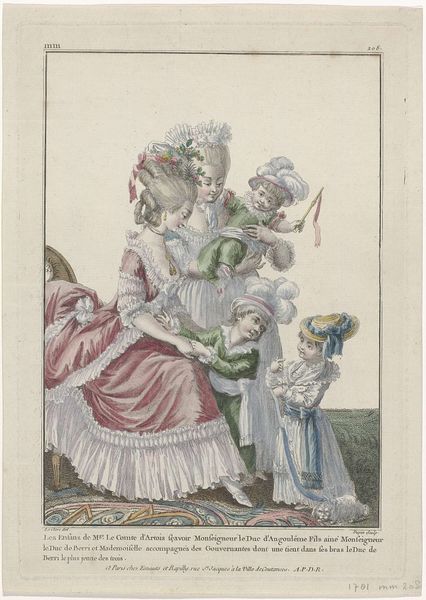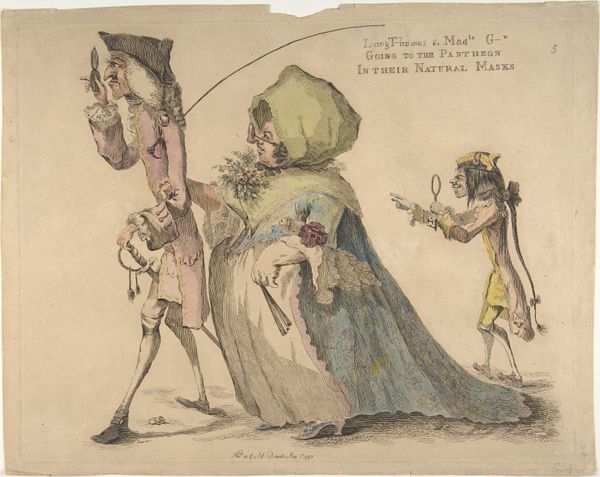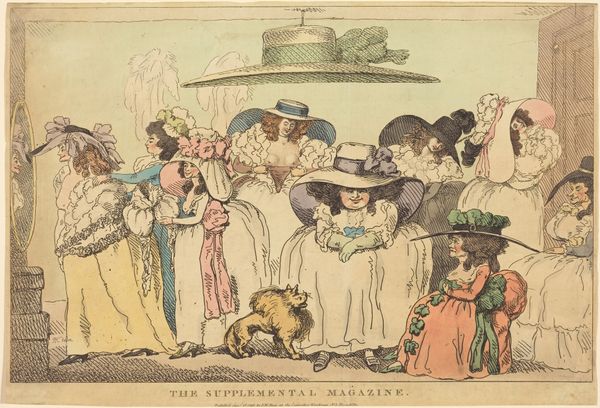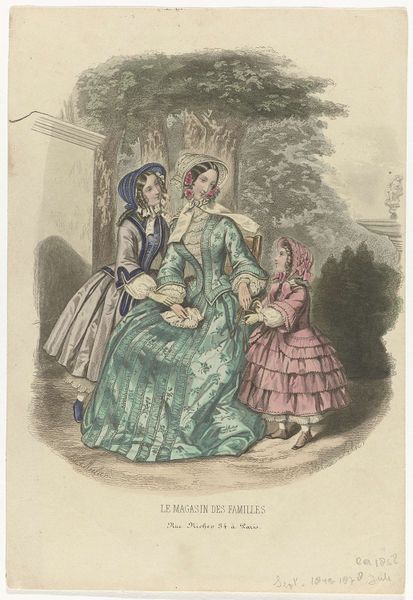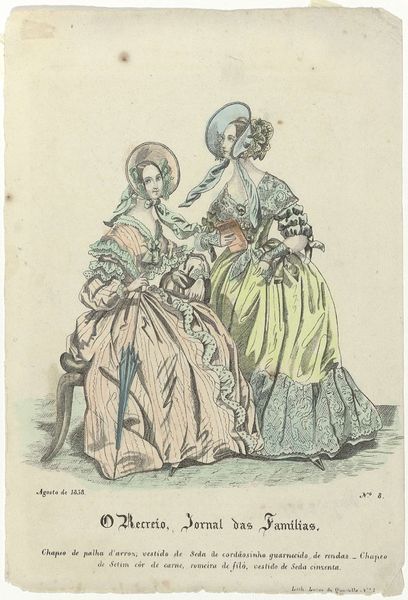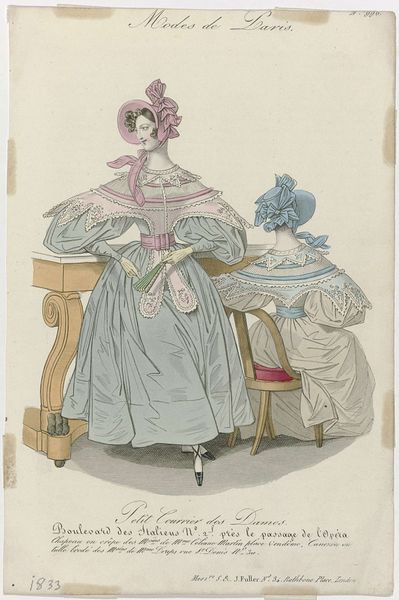
coloured-pencil, print, etching
#
portrait
#
coloured-pencil
# print
#
etching
#
caricature
#
coloured pencil
#
folk-art
#
romanticism
#
genre-painting
Copyright: National Gallery of Art: CC0 1.0
Editor: This is “Beauties” by Thomas Rowlandson, possibly from 1792. It's an etching and colored-pencil print showing two women, each in a ridiculously large hat. I find the juxtaposition interesting…there's a certain humor, but also something critical about their social position, maybe? How do you interpret this work? Curator: That's a perceptive observation. Rowlandson was a master of social satire. What strikes me is the performance of femininity here, especially through these exaggerated fashions. These aren't just portraits; they're caricatures that critique the societal pressures placed on women to embody idealized beauty standards. Editor: So you're saying these women aren’t just individuals, but representatives of something bigger? Curator: Precisely. Consider the French Revolution, unfolding at the same time. Rowlandson’s work often lampoons the excesses of the aristocracy. Might these exaggerated hats be a visual metaphor for the frivolous spending and preoccupation with appearance that characterized the elite, while the lower classes struggled? How do you think the coloring and lines contribute to this commentary? Editor: The colours do seem quite artificial, and the lines are definitely sharp and a little cruel... it almost makes them look like puppets. That would add to the sense of them being trapped by society. Curator: Exactly. The print's folk-art style also suggests the democratization of art during that time. These images were made to be consumed by a wide public, fostering discourse. This gives these "beauties" social power but at a cost. Editor: That makes me see the artwork completely differently. Thank you! Curator: And thank you! It’s through such dialogues that we unravel the complex layers of meaning embedded in these seemingly simple images.
Comments
No comments
Be the first to comment and join the conversation on the ultimate creative platform.
